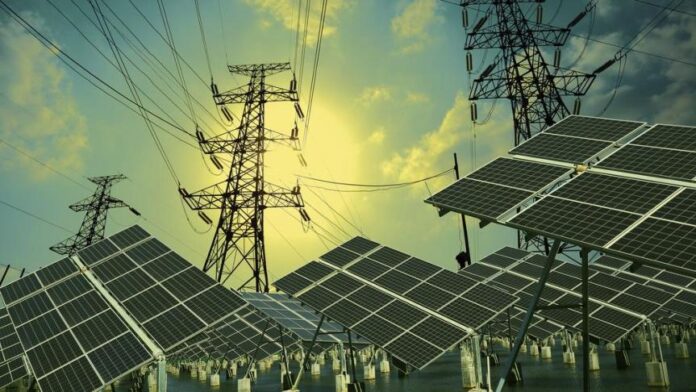Africa needs nearly $2tr investment in power by 2040
By Jeph Ajobaju, Chief Copy Editor
Egypt and Tunisia in North Africa and Mauritius and Seychelles in the South East in the Indian Ocean are the only four countries on the continent with 100 per cent access to electricity. Morocco and Algeria are closely behind.
South Africa, the second largest economy, has 85 per cent access to electricity, and Kenya 70 per cent. Nigeria with the largest economy has 55 per cent.
The lopsided access to energy between the four nations and the rest on the one hand, and, on the other, between the four and Nigeria with the largest population, puts in sharp focus the way Nigeria lags far behind in energy supply, the key to growth.
The gap between supply and demand for power in Nigeria and the others, coupled with a huge funding gap, underscores the threat of a bleak future for African power markets, according to the Middle East and Africa Market Outlook Report.
The report says about $1.9 trillion is needed to fund investment in African energy infrastructure between 2018 and 2040, and based on current financing trends, only $1.6 trillion may be forthcoming – leaving a gap of $244 billion.
The report highlights the power sector focusing on developed regions and emerging markets.
It explores core findings about business opportunities, regulatory environment in the energy market in the Middle East and planned projects and investments in emerging utilities markets in Africa.
The report says
- Africa is a “chronically underpowered part of the world” as only about 844 Terawatt-hour (TWh) of electricity was generated across the continent in 2020.
- This output was just 3.1 per cent of the global total, even though Africa is has a fifth of the world’s population.
- More than half of the 844TWh was generated in only two countries – South Africa (240TWh) and Egypt (199TWh).
- That leaves most countries with relatively little power, particularly in sub-Saharan Africa where fewer than 47 per cent had access to electricity in 2019, according to the most recent data from the World Bank.
- “The situation is far worse in rural areas, where just 27 per cent had access, compared to 83 per cent in urban areas.”
__________________________________________________________________
Related articles:
Seychelles is Africa’s least corrupt country
African economy anticipates $180b internet injection
Africa’s Foreign Direct Investment inflow drops
Tizeti deploys solar tech to bridge Africa’s digital divide
__________________________________________________________________
Continental access to energy
North African markets and a few of the more developed, smaller economies are better placed.
Mauritius, Seychelles, Egypt and Tunisia have 100 per cent access to electricity, and Morocco and Algeria are not far behind, according to the report, per The Nation.
The report also says
- Among the continent’s biggest economies, South Africa has 85 per cent access to electricity, Kenya (70 per cent) and Nigeria (55 per cent).
- At the bottom of the energy league table are Chad (8.4 per cent) and South Sudan South Sudan (6.7 per cent).
- Shortage of electricity in many African markets provides plenty of opportunities, but they tend to be accompanied by numerous difficulties too, from political instability and other governance issues to economic ones such as unreliable access to hard currency to pay for imports of vital equipment.
- “These challenges mean that private sector capital is often in short supply and, as a result, funding for power projects in Africa often relies on public sector sources.”
- For instance, from 2000 to 2019, Africa received $109 billion in public commitments in the energy sector, $50 billion of which came in 2010-2019, according to the International Renewable Energy Agency (IRENA).
- Of the total, almost $64 billion was for renewable energy projects, including large hydropower schemes.
- “Most of the capital was provided by international donors, including other governments and Development Finance Institutions (DFIs), using a combination of debt and grants.”
- Regular supporters include China, France, Germany, and the UK; multilateral development banks are the World Bank and African Development Bank (AfDB); and DFIs such as FMO of The Netherlands and KfW of Germany.













